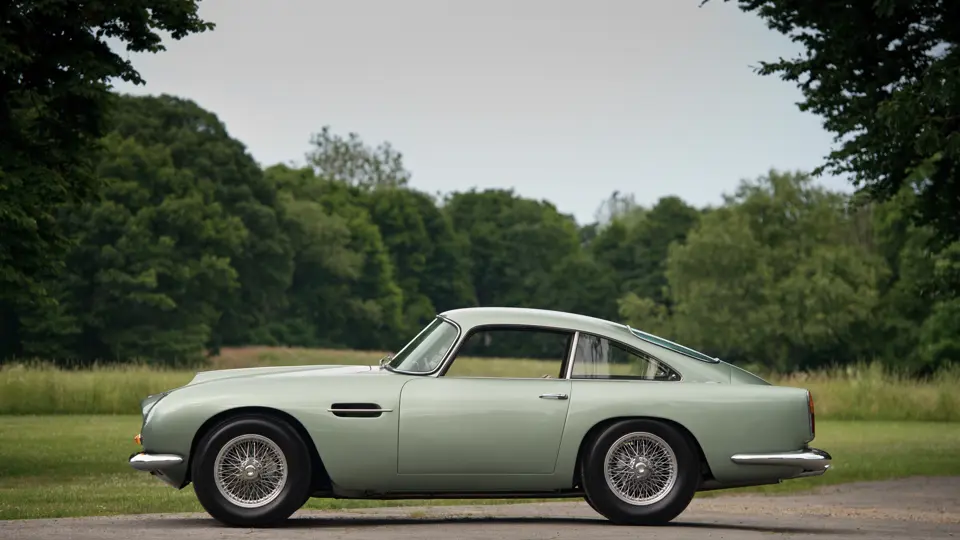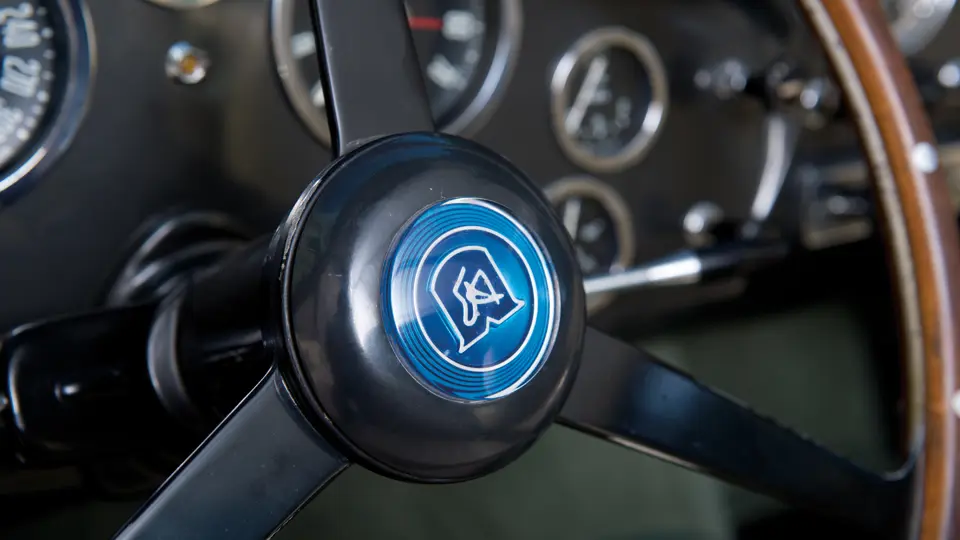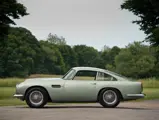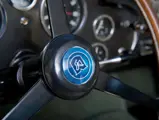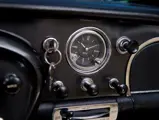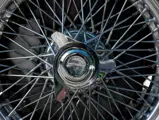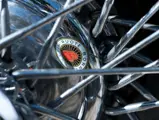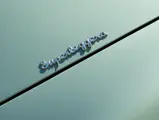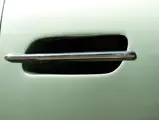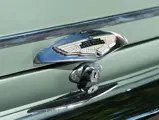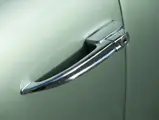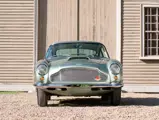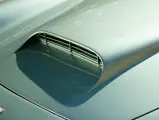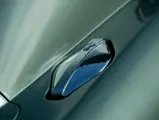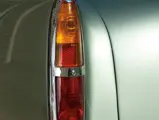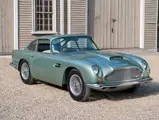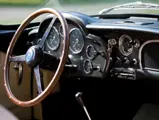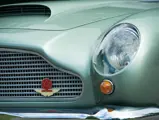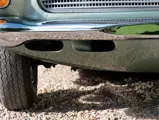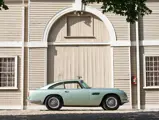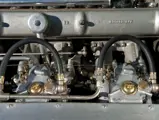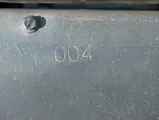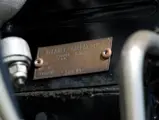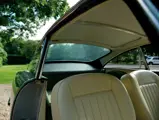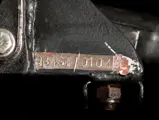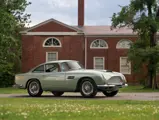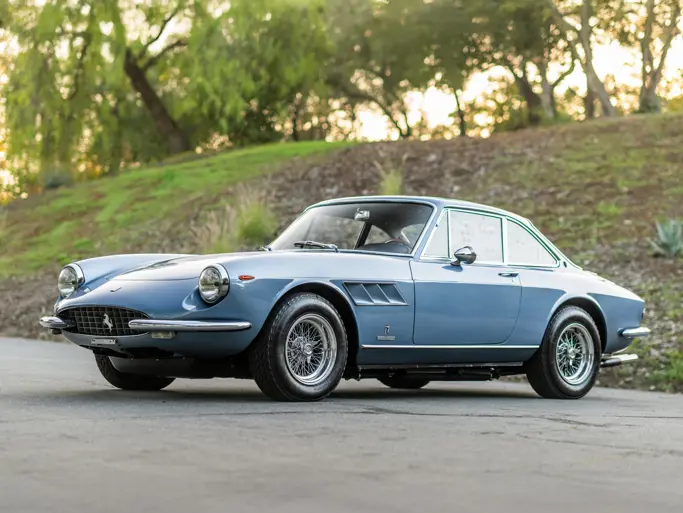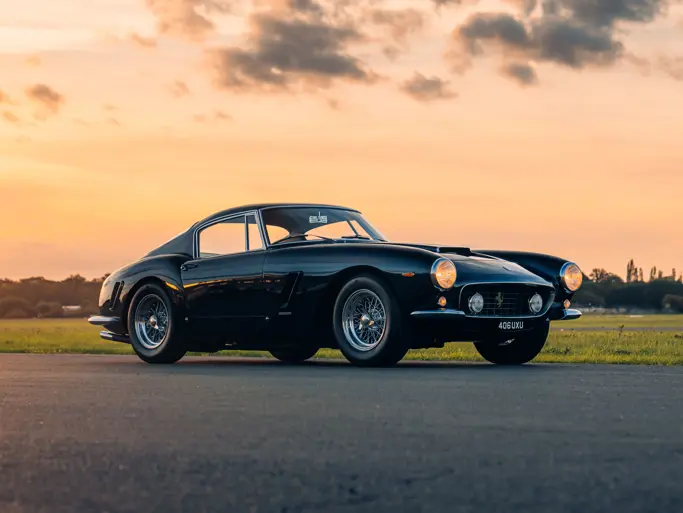Please note this title is in transit.
302 bhp, 3,670 twin plug dual overhead camshaft alloy engine with three Weber carburetors, four-speed synchromesh alloy-cased ratio gearbox, four-wheel coil spring suspension, and four-wheel disc brakes. Wheelbase: 95"
• The fourth DB4GT produced, with numerous interesting features
• Factory left-hand drive; one of only 30 from a total of 75 built
• Two known owners from new, the second of which since 1967
• Original, matching numbers engine
• Race bred with full comfort appointments
The stars lined up for David Brown and Aston Martin upon the introduction of its all-new DB4 model late in 1958. A competition-oriented variant, the DB4GT was formally introduced in September 1959 at the London Motor Show, based on the race winning prototype DP199/1. This was the very year in which Aston Martin achieved outright victory at Le Mans (First and Second Overall, with drivers Carroll Shelby and Roy Salvadori at the front, followed by Maurice Trintignant and Paul Frere), and took the World Sportscar Championship title, the smallest manufacturer ever to do so, before or since. The GT prototype won its first outing at Silverstone in May 1959, on Bank Holiday weekend, in the hands of Stirling Moss, and was one of the first cars away at Le Mans that June, in the same light green livery as the victorious Aston Martin DBR1s.
The GT was developed for increased performance by making it shorter, lighter, and more powerful than the production DB4. In order to save weight, the bodywork was of thinner, 18-gauge aluminum alloy, the wheelbase was reduced by 13 cm (approximately 5-inches), and the rear seats were deleted on all but a small number of special order cars. All together, weight was reduced by 91 kg (200 lbs). The engine was extensively modified, featuring higher compression (9:1), a twin-plug, dual-ignition cylinder head, and breathing through triple dual-throat Weber 45 DCOE carburetors. Power output was outstanding at 302 bhp at 6000 rpm, a useful increase from the claimed 240 bhp of the standard car, and qualifying the GT as the most powerful British car of its era. Maximum speeds during testing reached 153 mph with a 0 to 60 time of 6.1 seconds. It was also one of the first cars that could go from standstill to 100 mph and then brake to a dead stop in under 20 seconds—a tribute, in part, to its uprated Girling braking system, as used on Aston Martin’s competition sports racers of the era.
Outwardly, the GT is distinguished by faired in headlamps with perspex covers, a popular feature that was later adopted for the DB4 Vantage, then onto the DB5 and DB6 models. The rear screen and quarter windows were also made of perspex on many examples, while the bumper overriders were deleted, and the roll-down windows were frameless within the doors. Twin, competition-style, quick-release Monza fuel fillers were added atop each of the rear wings, leading to a high-capacity fuel tank mounted flat in the boot. GTs were fitted with spectacular lightweight Borrani wire wheels, usually 42 spokes with light alloy rims, and distinctive three-eared knock-offs completed this potent package.
The interior was trimmed to full Aston Martin road car specification, with fine Connolly leather and deep pile Wilton carpet. The evocative dash binnacle on the GT cars benefited from the addition of an oil temperature gauge, in addition to the standard array.
DB4GTs represented a strong challenge to the dominance of Ferrari in GT racing and enjoyed considerable victories, raced from 1959 by both the Works team as well as John Ogier's Essex Racing Stable. Driven by the likes of Roy Salvadori, Stirling Moss, Jim Clark, and Innes Ireland, the GT earned its stripes every weekend on the racing circuit. In December 1959, at the Bahamas Speed Week, when another driver rolled the DBR2 intended for Mr. Moss, the Works “borrowed” back a DB4GT just delivered to a Caribbean customer (DB4GT/0103/L), and Stirling handily won the next race, in an Aston plucked from the parking lot! Indeed the GT was a dual purpose car, at ease both on the track and on the Grand Tour.
As noted in a soon to be published book on the DB4GTs by Aston Martin historian Nick Candee, “Rivalry was intense as Aston broke Ferrari's winning streak. The short wheel base DB4GT was Aston's response to the 250GT ‘Tour de France.’ Ferrari retaliated late in 1960 with the great 250GT SWB. Aston then countered with the extremely lightweight DB4GT Zagato in 1961. Ferrari then launched its ne plus ultra GTO in February 1962.” So, game over, but clearly the DB4GT stretched the envelope for user-friendly car design.
Despite their tremendous desirability and value, the GT is still a popular entrant at major historic racing events, such as the Goodwood Revival and the numerous (and amazingly competitive) Aston Martin Owners Club Championship race meetings in the UK. And the DB4GT has proven “Grand for Touring” over 1000 miles with power and comfort, often winning or placing in many of the long-distance road rally events that have become popular in recent years, such as the Colorado Grand, the Copperstate 1000, the California Mille, and the New England Tour 1000.
Produced between 1959 and 1963, Aston Martin built a mere 75 DB4GTs (plus another 19 of the Zagato-bodied derivations and one Bertone-bodied special). Of the 75 examples, 45 were supplied in right-hand drive and 30 were left-hand drive. Amongst the most beloved of all Astons, the DB4GT remains unmatched for its unique combination of performance and roadability.
DB4GT/0104/L, the car offered here, was the fourth GT produced (on February 17, 1960). According to its factory build sheet, it was the first to be delivered to the U.S., via the noted French Aston Martin distributor Garage Mirabeau, in Paris, to a Mr. James G. Murray, of Pittsburgh, Pennsylvania. Specification included left-hand drive and livery in the favored racing color of Sea Green, with handsomely contrasting Off White Connolly hides and Borrani wire wheels. (Interestingly, research indicates that three of the first four cars were produced in Sea Green, while all four featured Off White upholstery). A 3.54:1 final drive ratio was indicated with the Powr-Lok (limited slip) differential fitted.
0104/L is offered today, most recently from the estate of its second known owner. Records accompanying the car indicate possession by him since 1967, perhaps making its 45 year ownership the longest of any Aston Martin DB4GT extant. In any event, this long-term ownership is certainly noteworthy and is also a testament to the remarkable originality of the car.
(Historian/author Candee theorizes however that 0104/L may have never left France, as DB4GT Zagato 0190/L was also later sold by Garage Mirabeau in 1962 to a Commander James Murray, then the U.S. Naval attaché to France, living in Paris. At the time of this writing, we have been unable to confirm whether both Mr. Murrays may have been one and the same.)
0104/L displays many early-production indicators, rarely if ever seen today on DB4GTs, and of those that remain, many have been updated during subsequent restorations. These include dual venting nacelles for the long, horizontal oil cooler (rather than the later, more common single large scoop below the bumper line), different headlamp cover mountings (unique to very early GTs), and an elaborate, quick-release spare tire hold down mechanism in the boot, among other small details peculiar to the initial cars.
Subject to a frame-up, rotisserie restoration from 1993–1996, two large photo binders document the extensive and meticulous effort. The chassis, floors, and inner fender panels were painted in correct “red oxide,” prior to its final finish in black. Original body number stampings are evident in the photos and, indeed, still verifiable today. The photos show a comprehensive engine rebuild, along with the expected brakes, suspension, and differential overhaul. A modest 3,000 km have reportedly been added to the odometer since completion of the refurbishment, with the car showing 69,000 km in total (fewer than 43,000 miles).
Although the restoration has mellowed somewhat, 0104/L remains a very sharp looker and performer, still presented in its original colors of period-correct Sea Green and Off White upholstery, contrasted with rich green Wilton wool carpeting. An RM car specialist recently had the opportunity to spend a day with this superb and delightful GT and reports that it starts easily cold or warm, indicates proper oil pressure, and has no hint of overheating on a hot summer day. It develops impressive power, tracks and brakes straight, and boasts a lovely gearbox feel. Since its very recent importation from Europe, it will come to auction with a fresh service from a noted Aston Martin Heritage service center, where it will also be cosmetically detailed.
Along with a copy of the factory build sheet and the French registration and restoration binders, the car comes complete with a jack, a factory authorized reproduction tool roll, plus a rare and original, factory workshop manual. This 0104/GT is a wonderful and important early example of the ultimate British GT, often referred to, with due affection, as the “bankers hotrod.”




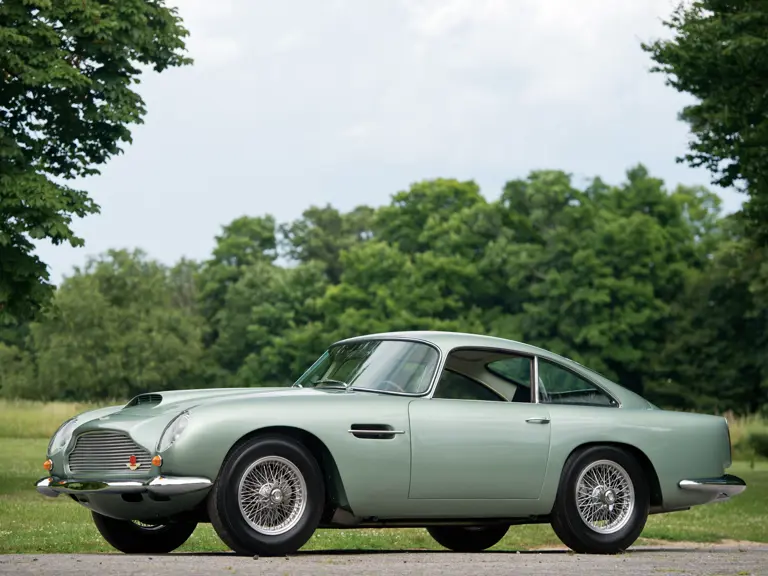
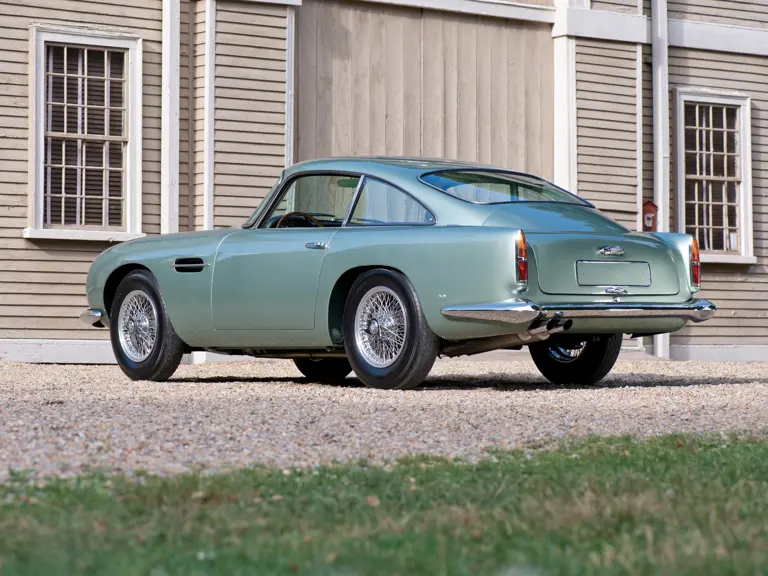
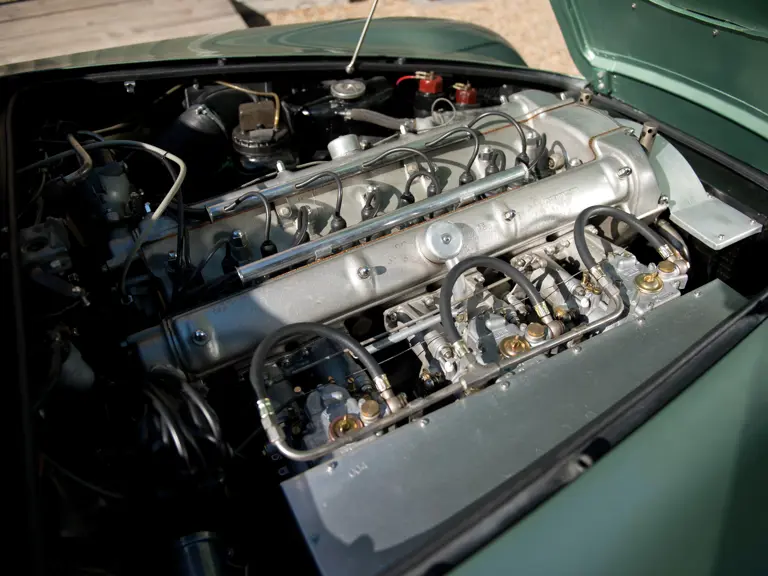
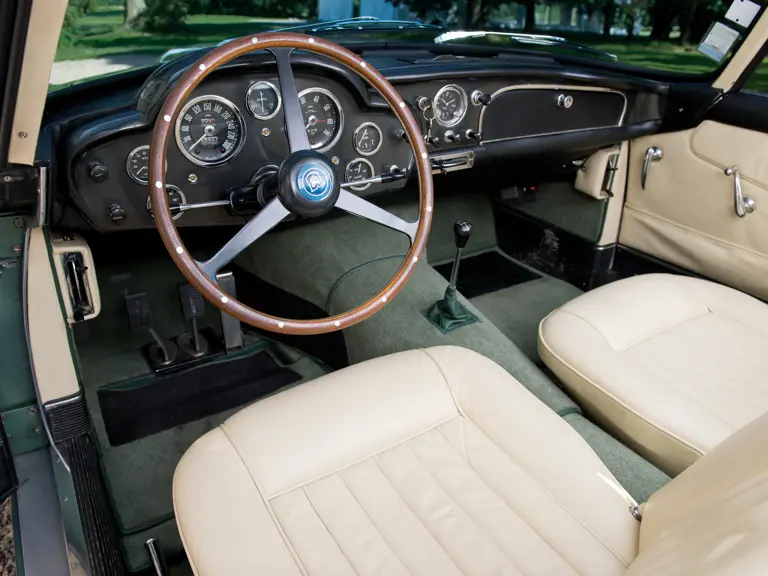
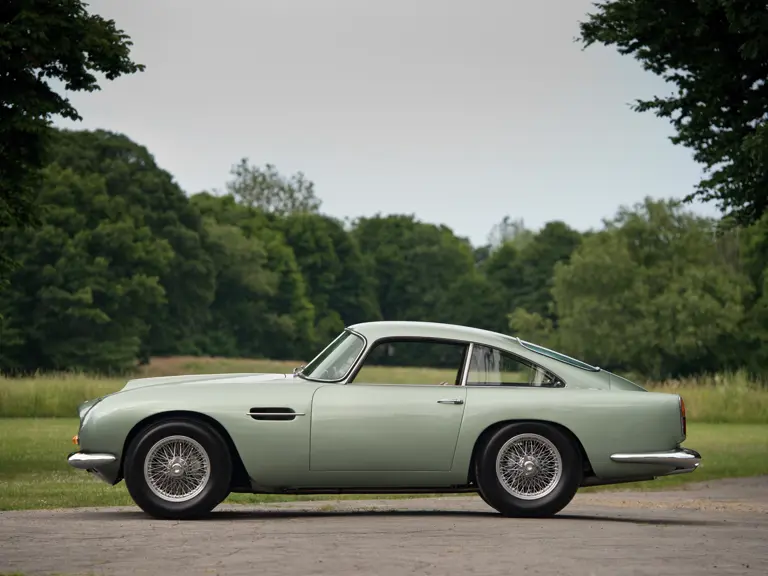
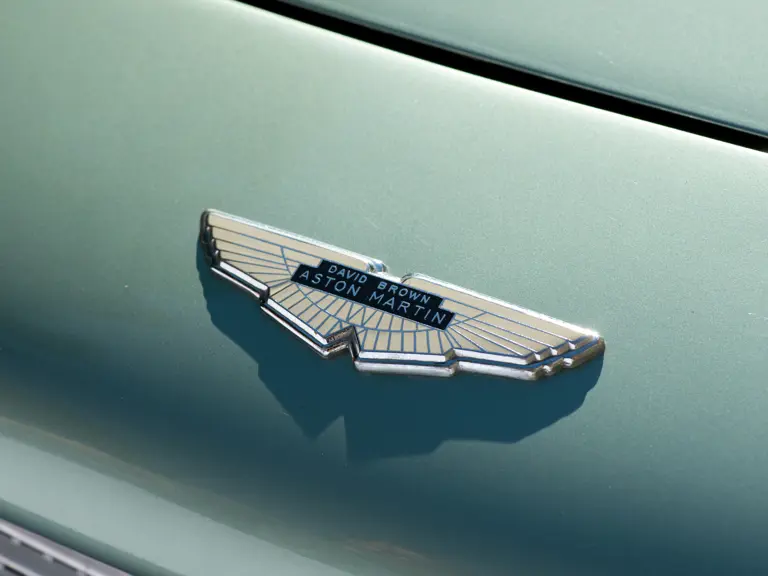

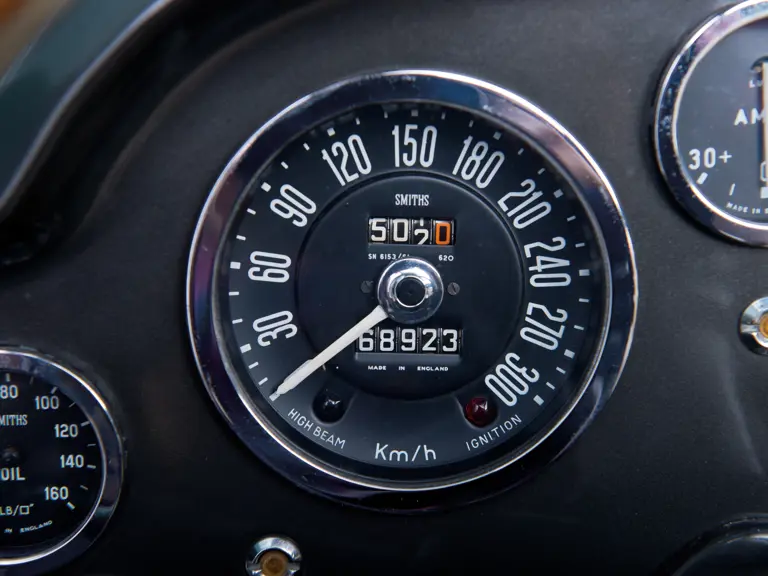
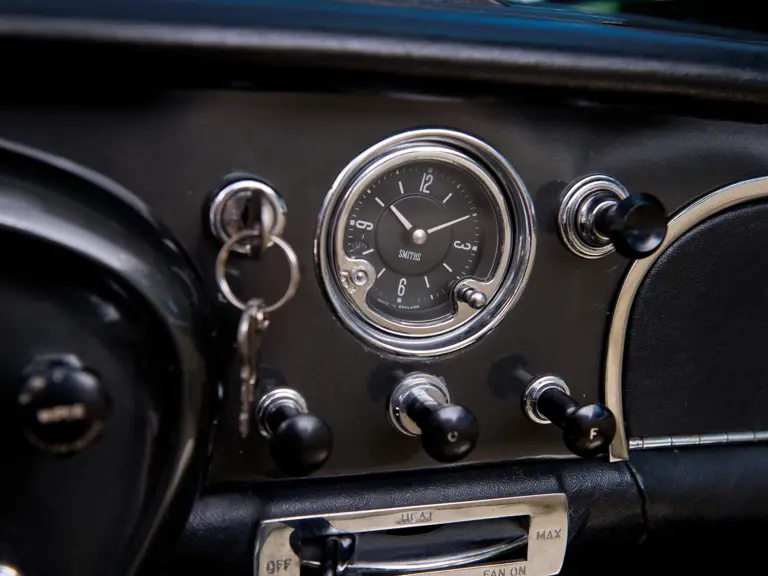
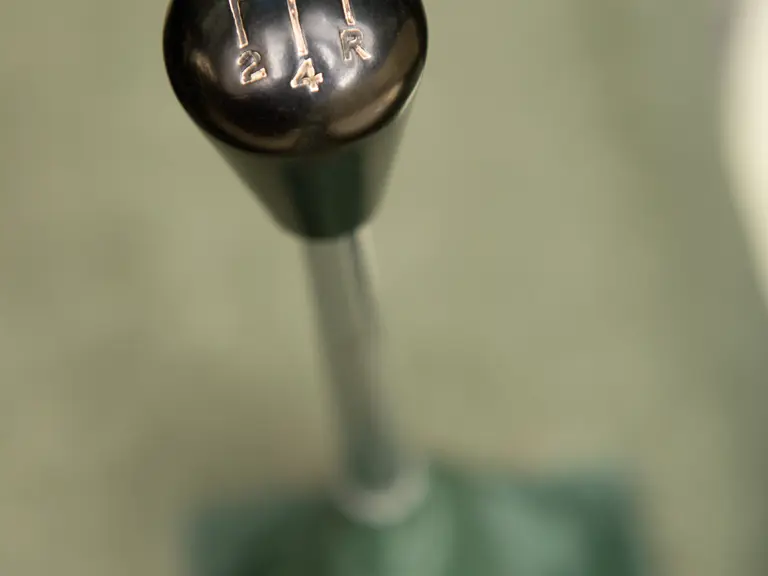
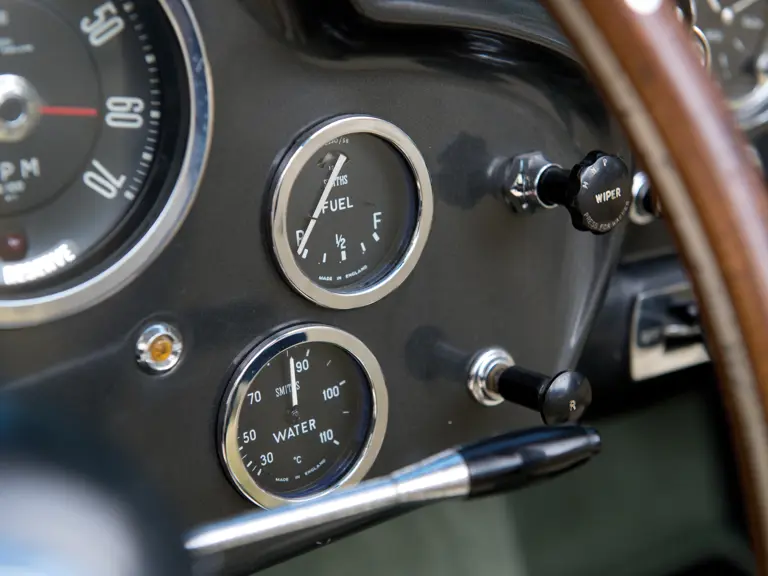


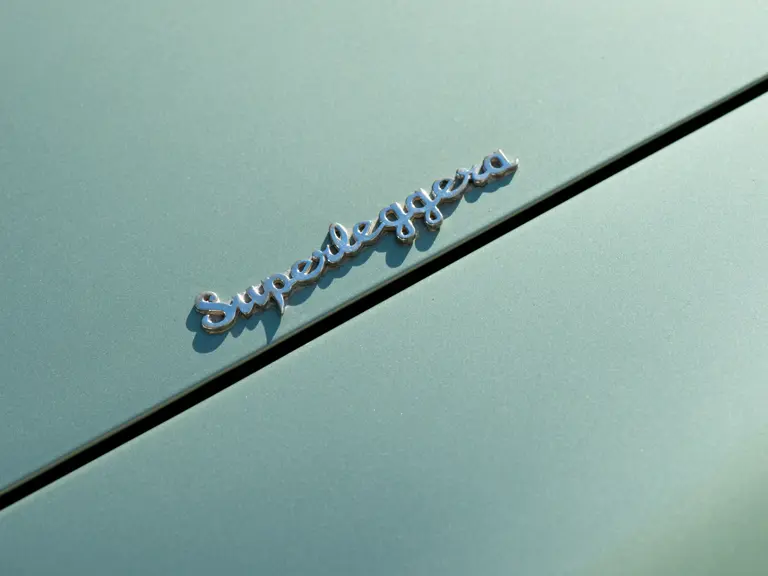
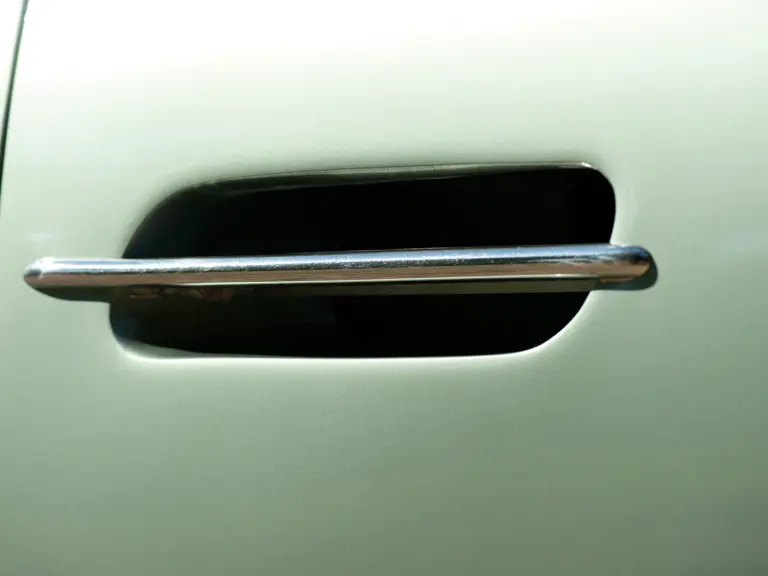
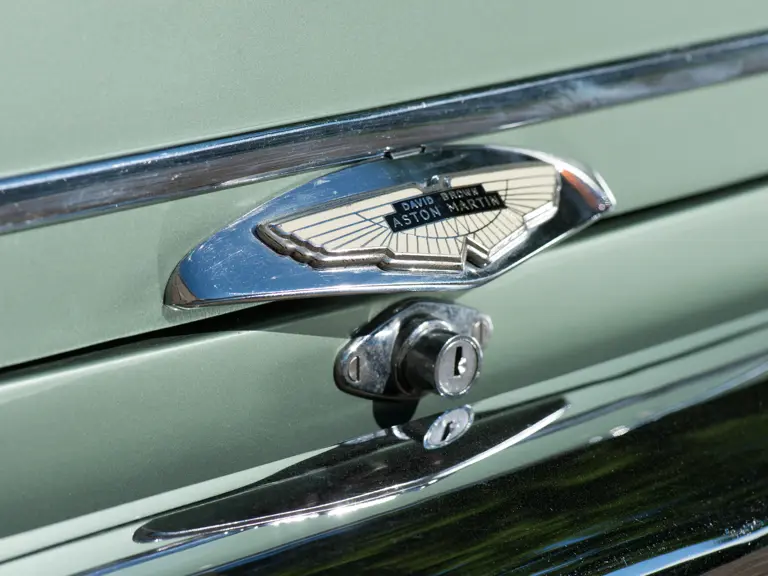

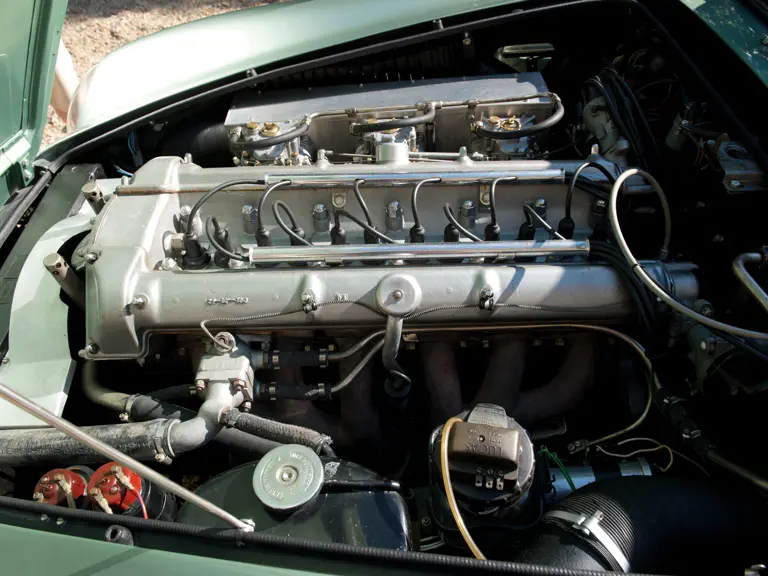



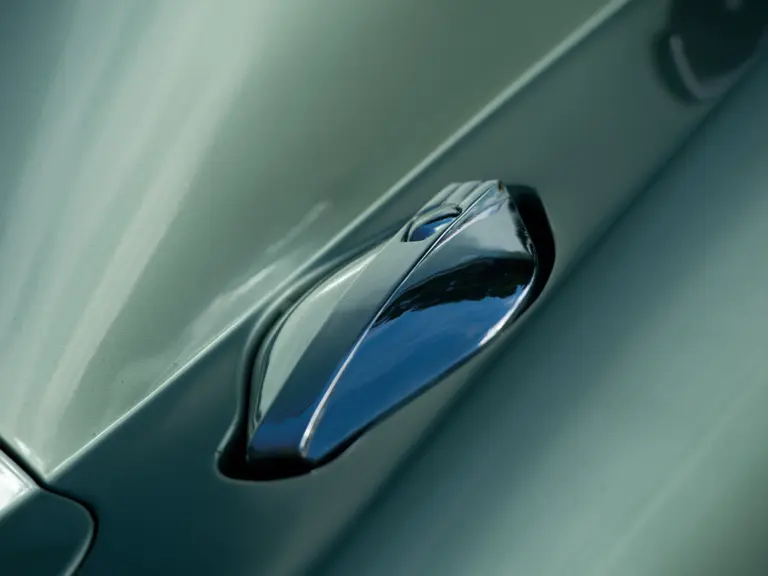


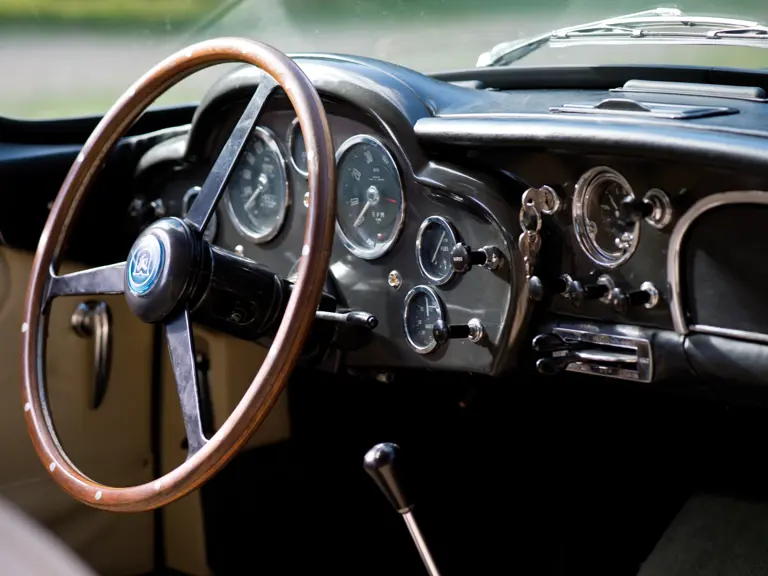

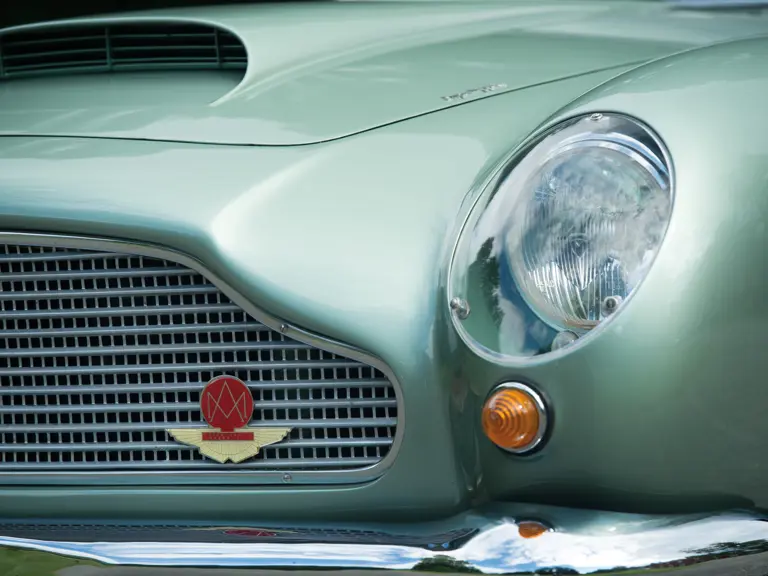
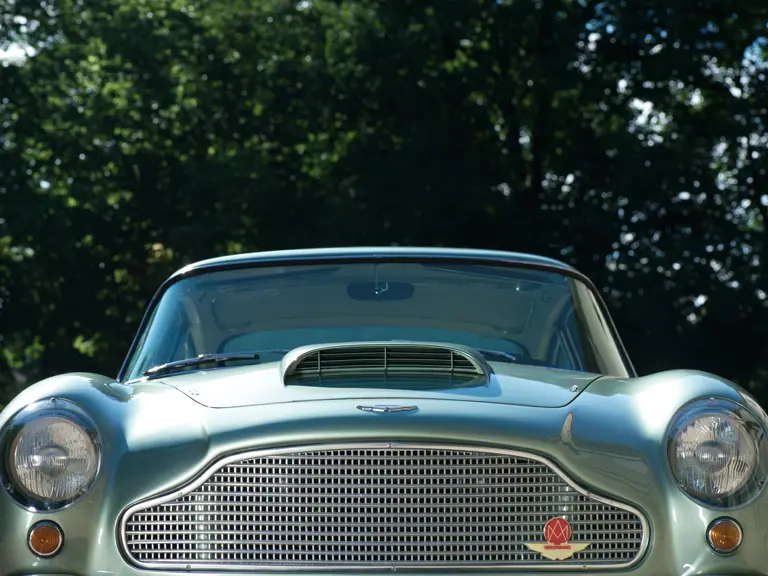

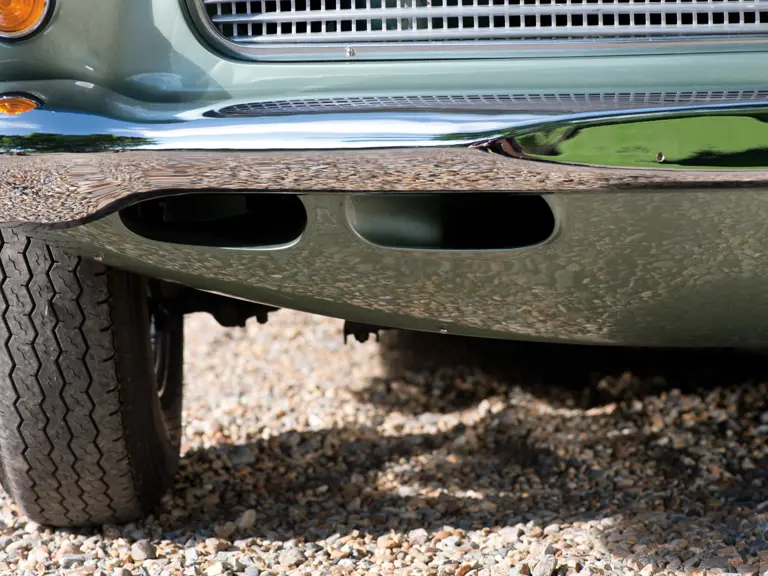
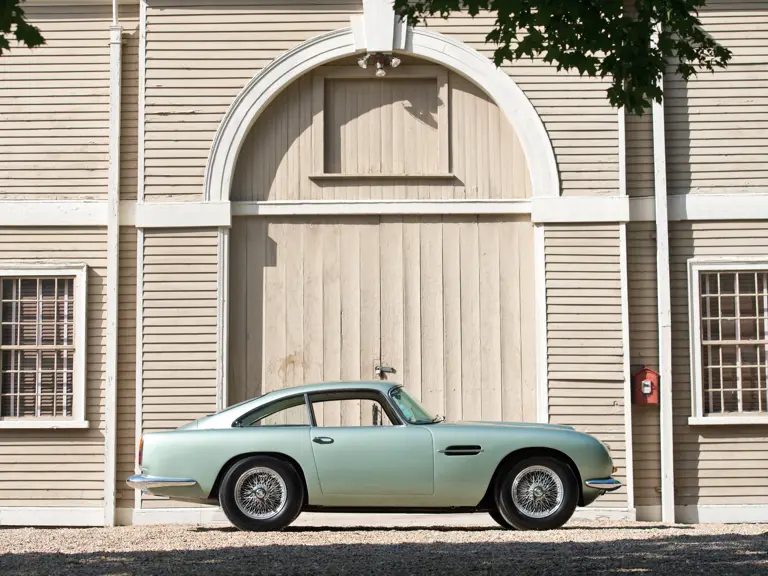
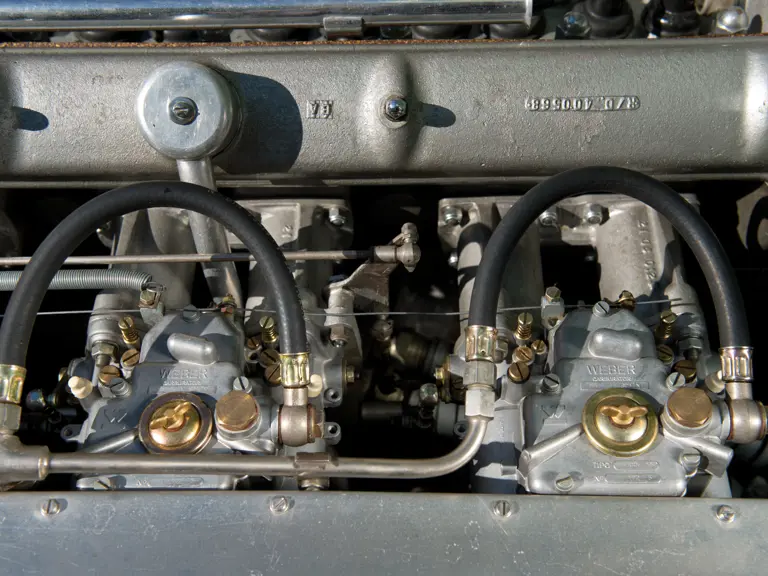
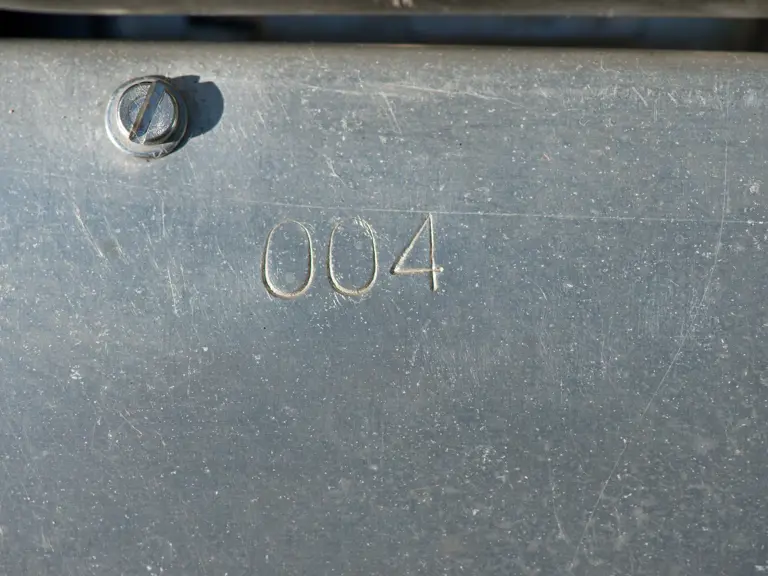


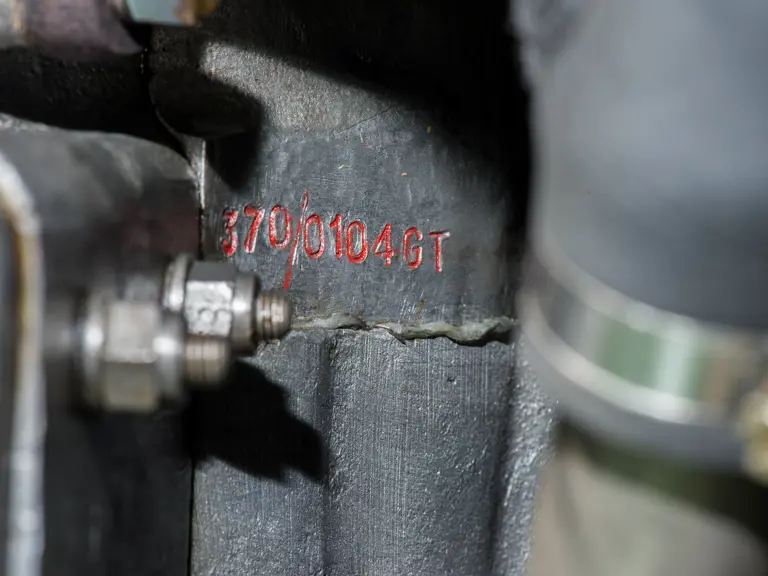

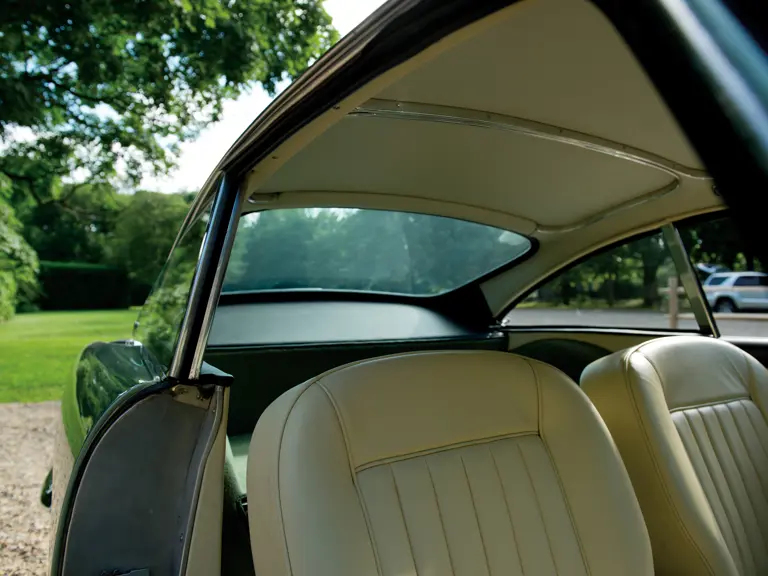
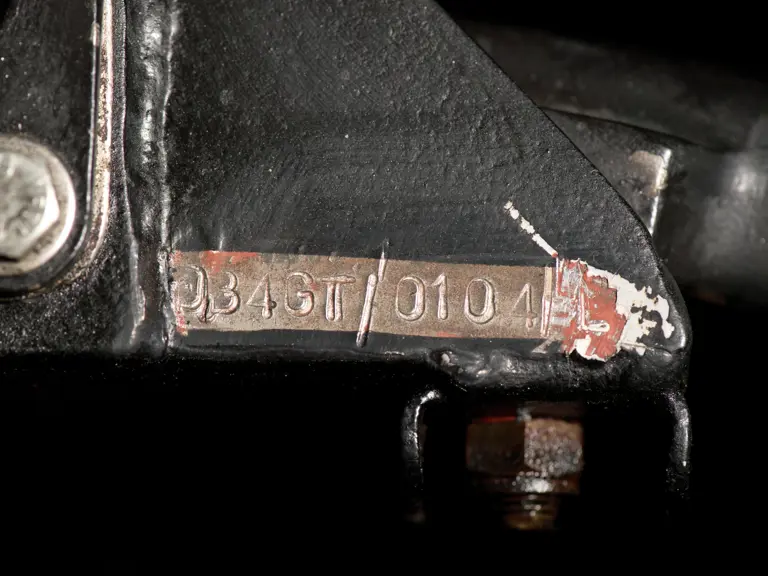
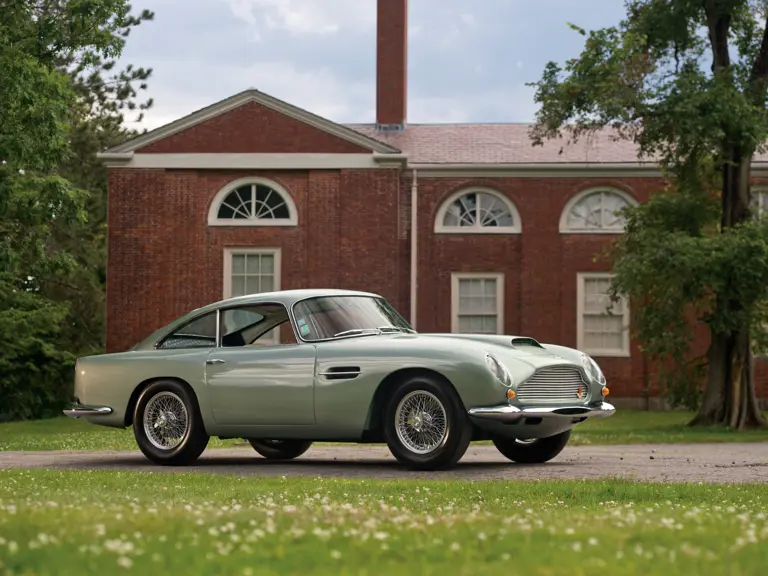
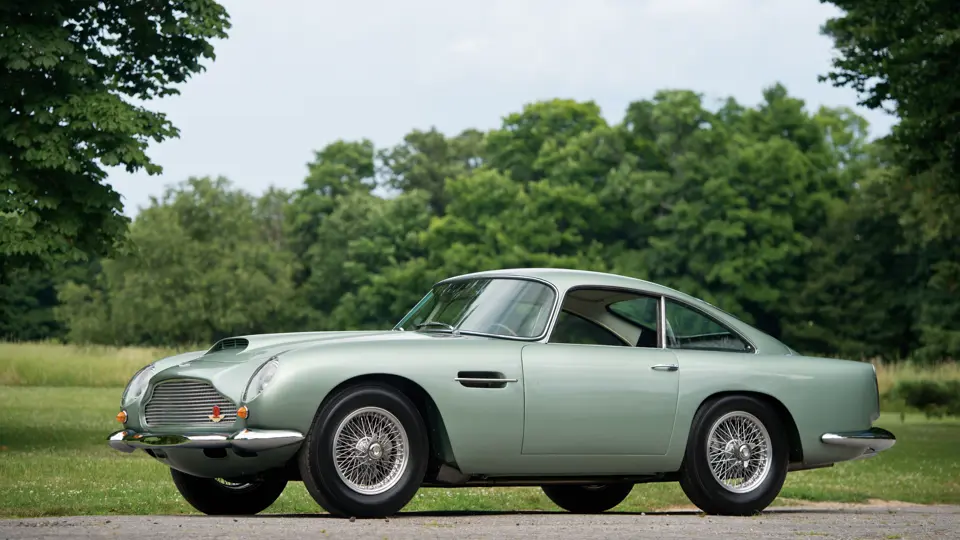
 | Monterey, California
| Monterey, California
